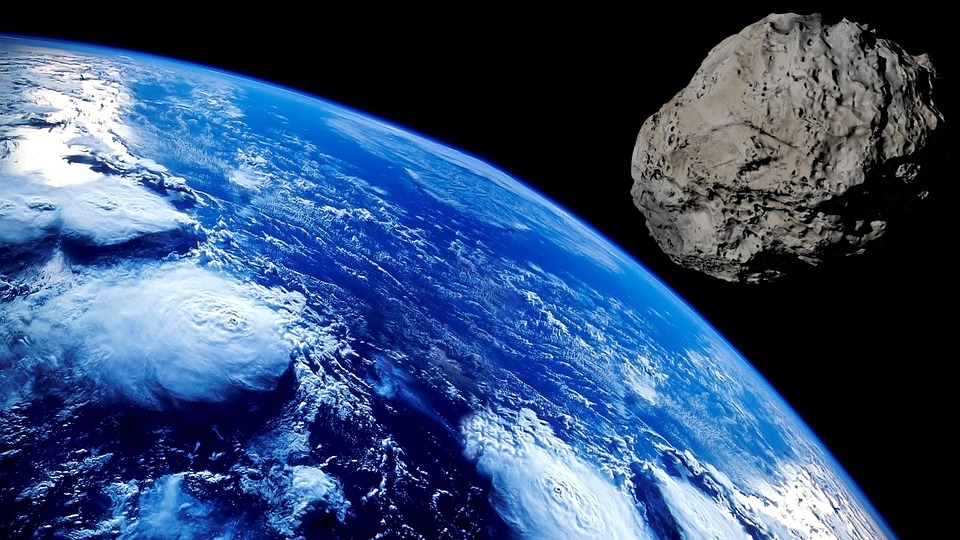Asteroids regularly pass by Earth, but it is not everyday that we may get to witness one completing its fly-by. Recently, NASA and the University of Hawaii released footage one of asteroid completing its approach to Earth.
Express reports that the footage of the asteroid was that of 2020 OO1, which passed by Earth a few weeks ago on July 27. The space rock measured 65 feet in diameter, making it a relatively small asteroid. Astronomers from UH were able to record footage of its fly-by with the use of the telescopes at the Las Cumbres Observatory global telescope network.
“It’s great to see our high school students being part of cutting edge science, using data from Hawaii’s observatories and around the world. These are our future STEM superstars,” said HI STAR director J.D. Armstrong in a statement. Students Esken Guarin and Jed Teagarden led the asteroid tracking.
Even as observatories are forced to temporarily close down because of the COVID-19 crisis, telescopes that are operated remotely have bee doing the job of tracking down asteroids.
Meanwhile, NASA has successfully launched its Perseverance Rover on a journey to Mars where it will search for signs of alien life. A new study has found that there are star systems in space that could boast a few exoplanets that are very much like Earth and could possibly host alien life. Experts also believe that the reason for the formation of these Earth-like exoplanets may be the absence of gas giant Jupiter.
The study was led by astrobiologist Professor Stephen Kane from the University of California, Riverside. Professor Kane zeroed in on a star system named Trappist-1, the star system in question is found to have three Earth-like exoplanets in its habitable zone.
“This made me wonder about the maximum number of habitable planets it’s possible for a star to have, and why our star only has one. It didn’t seem fair,” said Professor Kane.
His team of researchers then created a model that simulated planets of different sizes orbiting around stars. They found that it was actually possible for some stars to host as much as seven exoplanets that have similar qualities as Earth. They also found that the Sun can be able to support six planets that contain liquid water.



 Astronomers have discovered another puzzling interstellar object − this third one is big, bright and fast
Astronomers have discovered another puzzling interstellar object − this third one is big, bright and fast  Lost in space: MethaneSat failed just as NZ was to take over mission control – here’s what we need to know now
Lost in space: MethaneSat failed just as NZ was to take over mission control – here’s what we need to know now  FDA Pilot Program Eases Rules for Nicotine Pouch Makers
FDA Pilot Program Eases Rules for Nicotine Pouch Makers  NASA Partners with Katalyst to Save Swift Observatory with Innovative Docking Mission
NASA Partners with Katalyst to Save Swift Observatory with Innovative Docking Mission  Trump Administration to Launch Autism Initiatives Targeting Acetaminophen Use and New Treatment Options
Trump Administration to Launch Autism Initiatives Targeting Acetaminophen Use and New Treatment Options  NASA Astronauts Wilmore and Williams Recover After Boeing Starliner Delay
NASA Astronauts Wilmore and Williams Recover After Boeing Starliner Delay  Is space worth the cost? Accounting experts say its value can’t be found in spreadsheets
Is space worth the cost? Accounting experts say its value can’t be found in spreadsheets  CDC Vaccine Review Sparks Controversy Over Thimerosal Study Citation
CDC Vaccine Review Sparks Controversy Over Thimerosal Study Citation  SpaceX Starship Explodes in Texas During Test, Citing Nitrogen Tank Failure
SpaceX Starship Explodes in Texas During Test, Citing Nitrogen Tank Failure  Neuralink Expands Brain Implant Trials with 12 Global Patients
Neuralink Expands Brain Implant Trials with 12 Global Patients  Trump and Merck KGaA Partner to Slash IVF Drug Costs and Expand Fertility Coverage
Trump and Merck KGaA Partner to Slash IVF Drug Costs and Expand Fertility Coverage 































